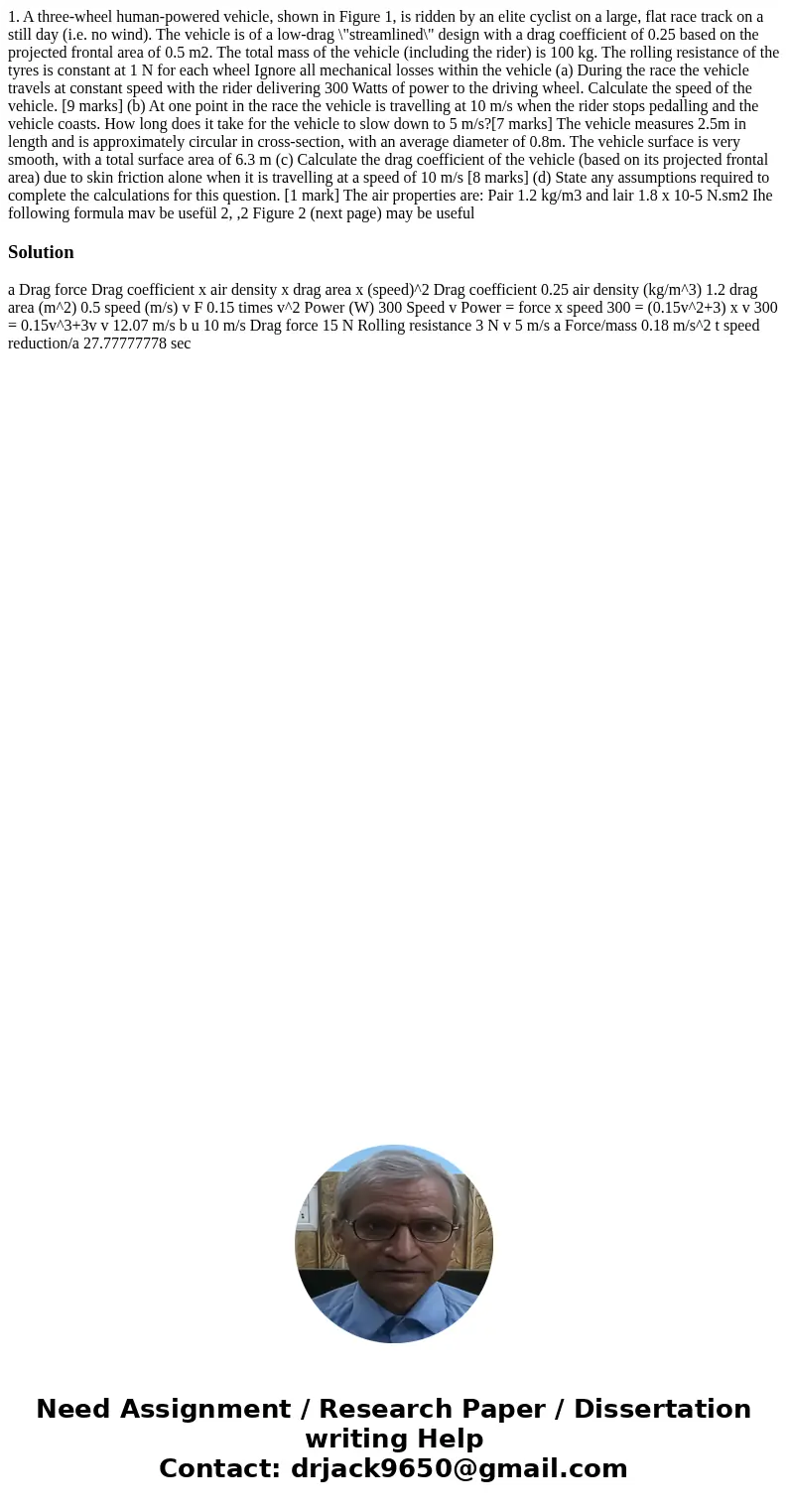1 A threewheel humanpowered vehicle shown in Figure 1 is rid
1. A three-wheel human-powered vehicle, shown in Figure 1, is ridden by an elite cyclist on a large, flat race track on a still day (i.e. no wind). The vehicle is of a low-drag \"streamlined\" design with a drag coefficient of 0.25 based on the projected frontal area of 0.5 m2. The total mass of the vehicle (including the rider) is 100 kg. The rolling resistance of the tyres is constant at 1 N for each wheel Ignore all mechanical losses within the vehicle (a) During the race the vehicle travels at constant speed with the rider delivering 300 Watts of power to the driving wheel. Calculate the speed of the vehicle. [9 marks] (b) At one point in the race the vehicle is travelling at 10 m/s when the rider stops pedalling and the vehicle coasts. How long does it take for the vehicle to slow down to 5 m/s?[7 marks] The vehicle measures 2.5m in length and is approximately circular in cross-section, with an average diameter of 0.8m. The vehicle surface is very smooth, with a total surface area of 6.3 m (c) Calculate the drag coefficient of the vehicle (based on its projected frontal area) due to skin friction alone when it is travelling at a speed of 10 m/s [8 marks] (d) State any assumptions required to complete the calculations for this question. [1 mark] The air properties are: Pair 1.2 kg/m3 and lair 1.8 x 10-5 N.sm2 Ihe following formula mav be usefül 2, ,2 Figure 2 (next page) may be useful 
Solution
a Drag force Drag coefficient x air density x drag area x (speed)^2 Drag coefficient 0.25 air density (kg/m^3) 1.2 drag area (m^2) 0.5 speed (m/s) v F 0.15 times v^2 Power (W) 300 Speed v Power = force x speed 300 = (0.15v^2+3) x v 300 = 0.15v^3+3v v 12.07 m/s b u 10 m/s Drag force 15 N Rolling resistance 3 N v 5 m/s a Force/mass 0.18 m/s^2 t speed reduction/a 27.77777778 sec
 Homework Sourse
Homework Sourse